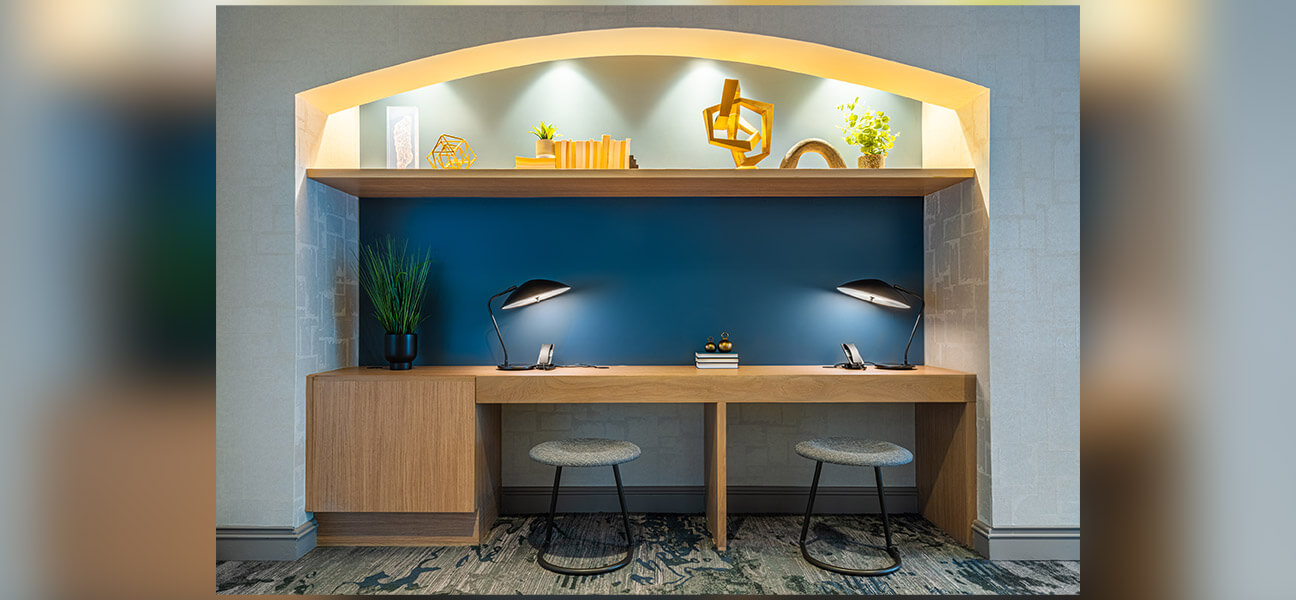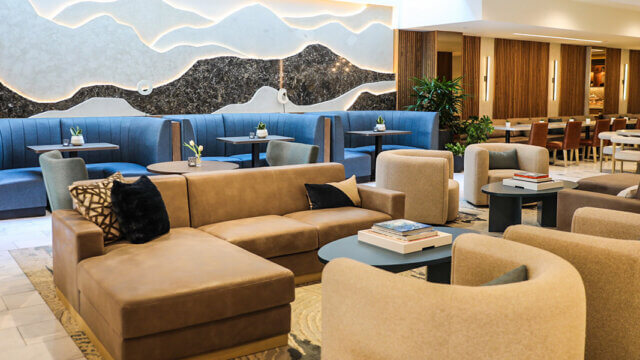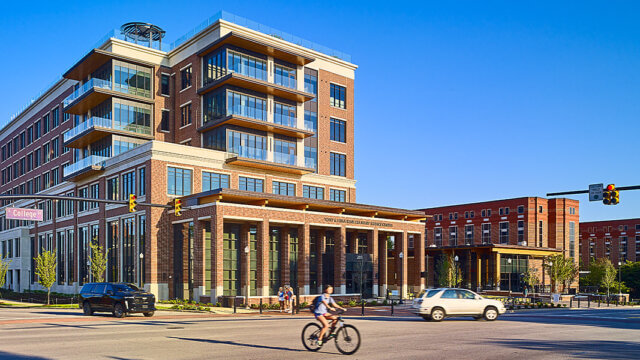With the increase in remote work, more and more travelers are working from their hotel rooms. This, coupled with the rise of “workcations” leaves hotel designers facing a new guest demands. Rooms must accommodate a working, business traveler, but also remain comfortable and luxurious for a leisure stay.
We spoke with David Tracz, partner, //3877, who gave us some insight into how hotel designers are meeting these new needs:
As more hotel guests are working from hotel rooms, how are you designing to maximize these spaces and accommodate this type of work?
One of the most impactful elements of beginning to design for hybrid work is having the existing infrastructure in place to support it, including strong WiFi and plentiful power plug-ins. From there, designers can work towards curating comfortable, yet efficient spaces to get work done—an element that is a direct result of the pandemic. In 2019, hoteliers were eager to remove desks from guestrooms, but this shift has proven that they are invaluable, multipurpose additions to the experience.
A lot of business travelers are bringing their families along on trips now. How do you design to accommodate business travelers who need to work from the room, but also for leisure travelers?
It’s important to lean on the character of the hotel, integrating playful elements into the design to maintain a fun, lively atmosphere in every setting. This is especially pertinent to creating spaces for every kind of traveler—finding that balance to make multipurpose spaces that are efficient for getting work done as well as hanging out to unwind. Adaptable products are always useful in this regard, including soft seating and an abundance of power outlets (whether on the walls or built into furniture pieces themselves).
Business hotels sometimes have a bad reputation for having tired design. How are you working to dismantle some popular, maybe sometimes, negative thoughts about their design?
Guest engagement is key in combating this stereotype; you want to encourage travelers to interact with their environment through purposeful selections of materiality, color and texture. By making dynamic selections, including biophilic elements and pops of color, designers can avoid the dreaded “tan on tan” look that have come to be negatively associated with monotone hotel aesthetics. We’re also seeing business hotels embracing their location, incorporating design elements that create a sense of place for guests, encouraging them to feel connected to the surrounding area during their stay.
What are some design challenges you face when designing for workspaces? How are you working to overcome these?
The majority of the challenges we face today are related to gaining accessibility to power, particularly in hotel renovations or adaptive-reuse projects. With an increased emphasis on devices, technology and other elements reliant on outlets, many older hotels don’t have an adequate amount of available power sources, or these outlets are placed inconveniently. Lighting design can also prove to be a tricky element to navigate during hotel renovations, especially when it comes to limited-service hotels. Natural lighting is a contributor to designing healthy work environments, and in many instances, it can be a difficult resource to capitalize on for existing structures.
What are some other functional design changes designers can make to hotel rooms?
The challenge of hotel room design is, at its core, fitting the most purposeful and efficient design elements into the smallest footprint. We’re seeing more soft seating being incorporated into these spaces, maximizing comfort as well as seating options other than the bed. Modular elements are also rising in popularity, heightening the functionality of the space by incorporating the television, luggage rack and seating options all into one wall unit.
How do you anticipate this type of design evolving? Is hybrid work here to stay?
Hybrid work’s impact on hospitality design is here to stay, and it’s going to continue propelling the industry forward, challenging traditional design and forcing purposeful evolution. Soon enough, designing for remote work won’t be a request, it’ll be a demand—even in leisure properties—so that people can work better on the move. To make room for such a shift, I can see design straying away from an abundance of storage; most people don’t unpack their suitcases anymore (myself included), so why do we have so many drawers when that space can be allocated to other elements?
Is there anything else readers should know?
Common spaces in hospitality environments have also shifted towards accommodating for hybrid work, taking more of a “WeWork” approach by finding points of connectivity to unite remote workers as well as provide them with a functional working environment. This includes a variety of seating options, such as private meeting spaces that can be taken advantage of spontaneously.


